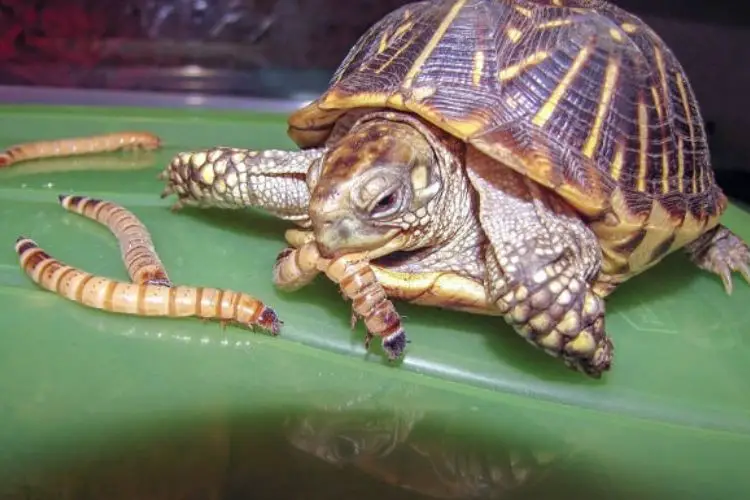Can Turtles Eat Mealworms? Where to Harvest Mealworms
Mealworms are the larval form of a beetle known as Tenebrio Molitor. In nature, they are scavengers eating decaying plants and animals, and they live under logs and rocks. They contain proteins, fat, and fiber which omnivorous pets like turtles can benefit from.
So, can turtles eat mealworms? Yes, turtles can eat mealworms and benefit from various nutrients they possess. Both dried and live mealworms are rich in proteins and should be part of their diet. However, mealworms are high on proteins, which, if consumed excessively, can cause pyramiding on their shell.
It is only fair to feed these omnivore pets worms, but the real question is where to harvest them and what nutrition advantages they have. Below is more on this topic.
Can You Feed Mealworms to Your Pet Turtles?
Contents
Most turtles are omnivores, which means they enjoy both plant and animal matter in their diet. These pets can comfortably enjoy mealworms, and it is encouraged you give them an irregular diet. According to ScienceDirect, a live mealworm is composed of 20% protein, 13% fat, 2% fiber, and 62% moisture. Mealworms can be a great source of nutrients for baby turtles who require proteins, potassium, and iron to grow strong.
Eating many mealworms, however, can cause multiple health issues for turtles because of the high protein levels. Excess proteins can cause shell pyramiding, which is the formation of scutes on the turtle’s shell as it grows. Pyramiding occurs to growing turtles when their shells are still soft and developing. In addition, mealworms are high in fats and salts that can cause kidney issues if ingested in large amounts.
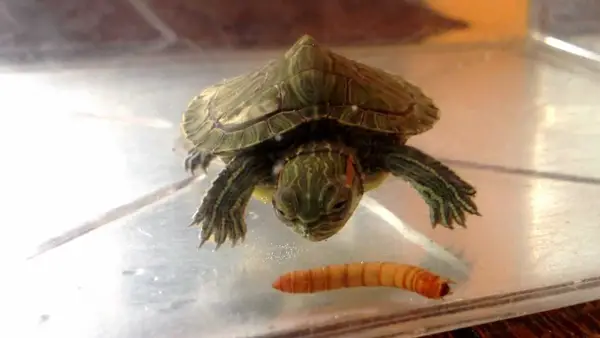
Mealworms are common in moist, dark, calm places like under logs and rocks. They can also live in accumulations of stored grain products that have been damaged over time. Mealworms are also available in local pet stores, fishing goods stores, and online shopping websites. To start your mealworm colony, buy larval types sprayed with hormones that make them grow but not pupate.
The number of worms turtles can eat varies with age, diet, and species. In most cases, feed them a few worms in a bowl. As for aquatic turtles, serve them in water or inland, depending on their liking.
You should then clean the remaining worms from the pond after the turtle has finished feeding to keep the pond clean. If your pet likes these worms, you can give them hornworms, butterworms, and superworms too. But remember to feed them in moderation.
Do Turtles Like Mealworms?
Turtles can get addicted to mealworms to some point, which is unhealthy because they need other healthy foods for growth. Most species still depend on flesh to get proteins and quench their carnivorous needs, so they can feed on mealworms comfortably. However, be sure to control the amount they ingest to avoid future health complications caused by overfeeding like obesity.

Health Benefits For Turtles Eating Mealworms
Mealworms contain numerous proteins that are beneficial to both baby and adult turtles. According to PetMD, 25% of a turtle’s diet should consist of feeder fish and insects that are a rich source of proteins. In addition, mealworms contain fiber that helps maintain bowel health and blood sugar levels.
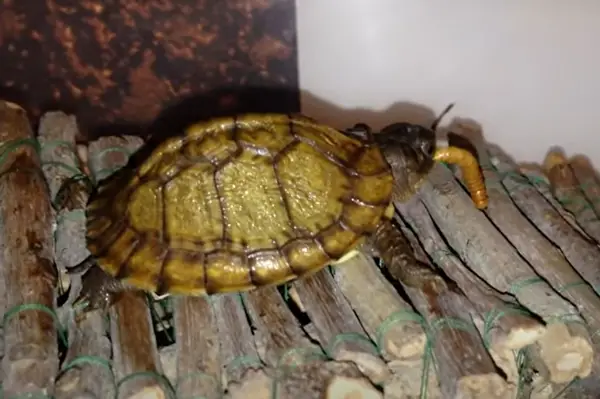
How Much Mealworms Should Turtles Eat?
Though mealworms are rich in proteins, turtles should feed on this diet moderately. The high protein and fat levels can cause multiple health complications in turtles. Baby turtles can feed on a quarter of a bowl mixed with other healthy diets, while adults can feed on a full bowl.
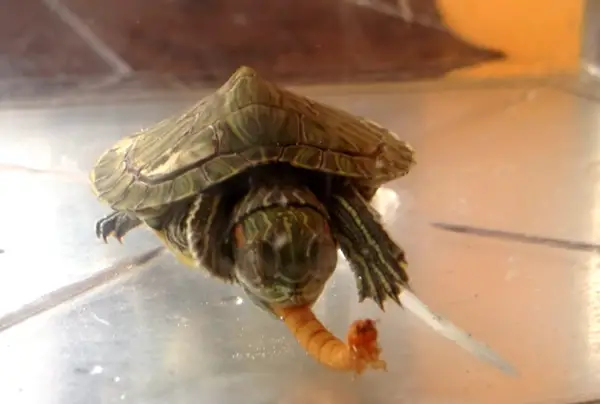
How Do You Prepare Mealworms For Turtles?
For turtles who prefer feeding on land, add mealworms to their bowl and mix them with some other foods they like. For aquatic turtles, you can feed them in the water and be sure to clean the leftovers. Some turtles would like to scavenge for the worms, and in this case, you can place them out where they can hunt for them.
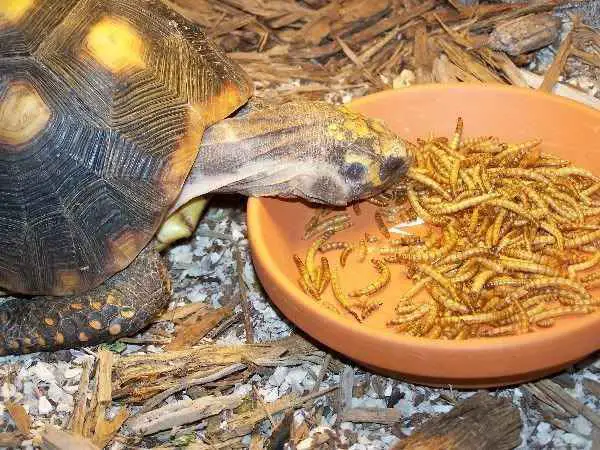
Can You Feed Mealworms To Baby Turtles?
Baby turtles need a lot of proteins for their developing bones and shell. Mealworms can be a great advantage to these young reptiles, offering them the essential minerals they need. You can serve them in a bowl or in the pond, depending on how your pets like to feed.
Video Of A Turtle Eating a Live Mealworm
Frequently Asked Questions (FAQs)
Box turtles are omnivores as well, which means they enjoy eating mealworms. Some box turtles scavenge on bugs, snails, and silkworms which means they can hunt for mealworms and eat them. Avoid feeding them too many mealworms to avert the risk of addiction.
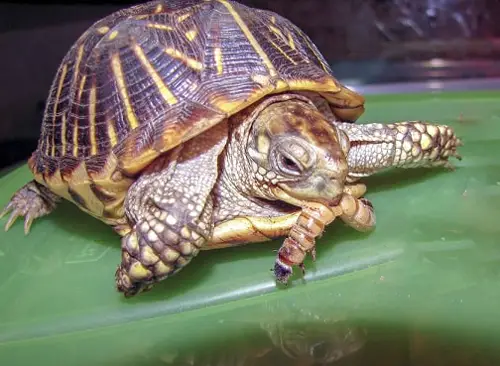
At an early age, red-slider turtles are more carnivorous and tend to eat a lot of animal matter than green matter. Mealworms are a great source of proteins for these turtles and should be in their diet. This diet should be irregular so that the turtles can still be able to eat other healthy diets they require.
Painted turtles out in nature tend to feed on live foods more than vegetables. This means they can comfortably eat mealworms and benefit from the various nutrients they contain. You can place some worms in the pond where the painted turtles like feeding so they can float up and eat them.
Outro
Juvenile turtles are mostly carnivores, which changes as they grow older. This means they can enjoy eating insects quite comfortably even at their old age. This diet has many nutritional advantages that they cannot find in the green diet.
It’s best to know which insects your turtle likes most and be provided to them occasionally. Thankfully, mealworms are available in local pet stores, or you can create a colony at home. Be sure to give the right amount of this diet and on the recommended periods.
Do you want to know if turtles eat cheerios or meat? Read our articles about it to learn more.


